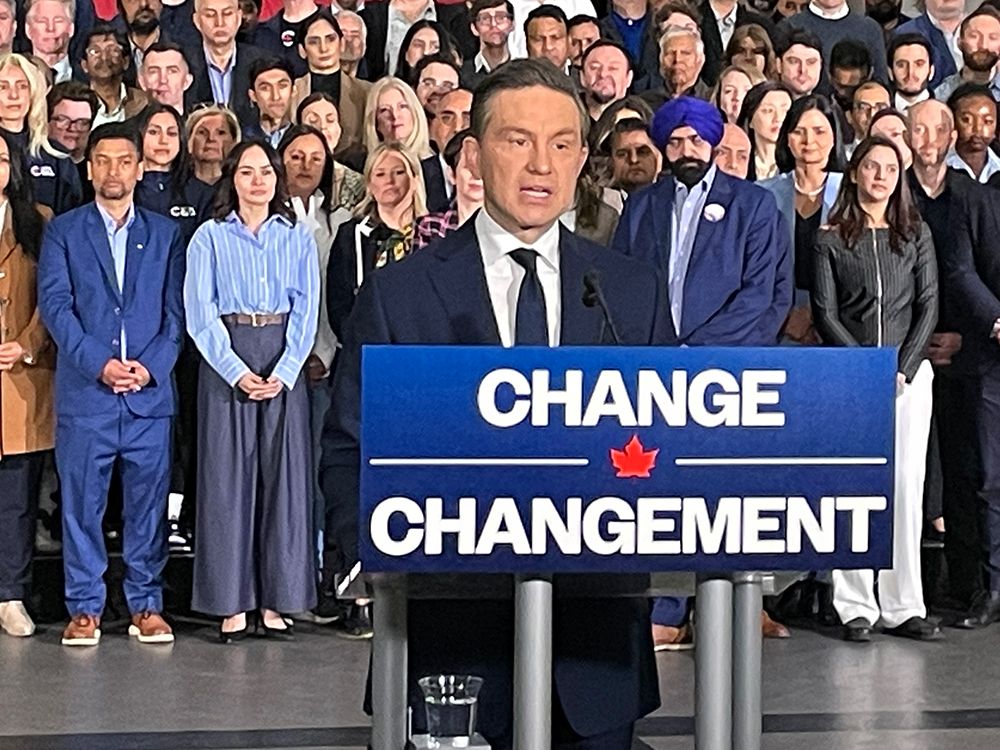
TROIS-RIVIÈRES, QUE. – Every election, American newspaperman Henry Louis Mencken once said, is an advanced auction in the sale of stolen goods.
Mencken suggested voters should have a healthy distrust for the promises politicians make to the electorate before trying to harvest their votes.
The Liberals were in a bit of a fix, having released a platform on Saturday that pledged $129 billion in new measures (tax cuts and new spending).
The eye-popping nature of the numbers mean Mark Carney’s Liberals are projecting cumulative deficits of $225 billion over the next four years.
University of Calgary economist Trevor Tombe noted that
the plan abandons the previous Liberal government’s fiscal anchor
of deficits that would not exceed one per cent of GDP (in fact they are closer to two per cent under Carney) and that higher interest rate payments mean 15 cents of every dollar in tax will go to servicing the debt by 2028.
“The fiscal trajectory of the federal government is now posted in a potentially unsustainable direction,” he wrote in The Hub.
The revenue assumptions were fluffed by booking $28 billion in “increased productivity gains,” a flight of fancy that should not be taken literally or seriously.
But the Conservatives seem to have looked covetously at the Liberal costing platform and said: “Hold my beer.”
Any hopes they had of profiting from the prodigal nature of the Liberal platform disappeared when they released their own costing document.
It contains $109 billion in new measures: $74.8 billion over four years in foregone revenue and $34.5 billion in new spending (which, because Conservative Leader Pierre Poilievre has promised a dollar in savings for every dollar in spending, commits the Conservatives to an equivalent value in cuts).
But there are so many curiosities in the plan, it is a wonder they decided it was a good idea to release it at all.
For one thing, when they announced their major income-tax cut, they promised $7 billion in cuts in year one, rising to $14 billion a year when fully implemented in year four.
In the platform, the cut amounts to $1 billion in year one and $5.4 billion in year two, less than the Liberals are promising in the first two years ($4.2 billion in 2025/26 and $5.7 billion in 2026/27).
Then there are the dubious assumptions on revenue, such as the billions of dollars booked on increased oil and gas activity as a result of legislative measures like abolishing the emissions cap. It is a good bet that such a measure would be welcomed in the oilpatch but how could anyone say with certainty that it will be worth $5 billion over four years? The answer is, they can’t.
The document balances the revenue lost by cancelling the capital gains tax hike ($12.5 billion over four years) with an assumed increase in revenue from capital gains tax because of increased investment ($12.1 billion over four years). The Liberals record an $8.1-billion loss of revenue over four years but do not book any revenue from economic growth.
This exercise in wishful thinking is repeated time and again in the Conservative platform to bolster the revenue number.
Carney was at a manufacturing plant in Trois-Rivières, Que., and was asked about Tombe’s assessment that the Liberal platform is potentially unsustainable. But he was able to roll out from under the barrage of reporters’ questions by pointing to the Conservative platform. He said the Conservatives will “cut what Canadians need.”
“This is based on phantom growth that comes from the sky. There is a ‘bring it home tax cut’ that never comes home — it doesn’t arrive until years four and five. The numbers are a joke, but we are not in a joke,” he said. “This is a real crisis, a real situation, and the question is: In a week’s time, who is going to be negotiating with President Trump and who is going to be managing the finances in this country?”
He said if the Liberals had made the same assumptions in their platform that the Conservatives appear to have made, the budget would be balanced within four years.
“It’s realistic to expect that if we are given a mandate to execute on this plan, which we will, we can see a surplus by the end of this period. But you don’t make those assumptions at this point,” he said.
Where does all this leave conflicted voters?
Carney said he has presented “a clear directional plan.”
Both major parties have offered voters plenty of information to suggest their broad orientation. Canadians should choose the leader and policy direction that best corresponds to their view of Canada.
But when it comes to trusting the fiscal details in party platforms, they should park their credulity and embrace their skepticism.
Twitter.com/IvisonJ
Get more deep-dive National Post political coverage and analysis in your inbox with the Political Hack newsletter, where Ottawa bureau chief Stuart Thomson and political analyst Tasha Kheiriddin get at what’s really going on behind the scenes on Parliament Hill every Wednesday and Friday, exclusively for subscribers. Sign up here.